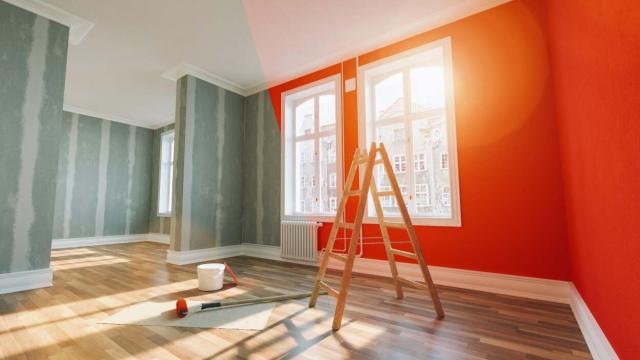When it comes to economical ways to transform a room—or an entire house—you cannot beat paint. If you’re reasonably capable, you can DIY a paint job for a small amount of money and in a relatively short amount of time, and that new color on the walls can have a dramatic effect on a space. Paint can make a room feel newer, larger, and more welcoming.
If you pick the right color, that is. Choosing a paint color can be challenging, and just about everyone has had the experience of finishing up a paint job and realizing the color they chose—and just spent hours applying to the walls—just isn’t right. You can spend weeks staring at paint chips and brushing samples onto the walls and still hate the color. It’s one thing if you notice right away—you still have some easy options to adjust the shade of your paint. So what do you do if you’re out of vacation days and don’t have the extra budget (or extra energy) to start over and re-paint the room? You actually have more options than you think.
Adjust lighting
Color is light—more specifically, color is the perception of different wavelengths and frequencies of light. If you can’t stand the paint you just spent days applying to your walls, the first thing you should investigate is the lighting in the room. Try different lighting temperatures by swapping out bulbs, and change the position of lighting sources like lamps if you can. You can also try changing your lighting to be as close to natural light as possible. Adjustable bulbs that give you a range of temperatures can help you experiment with the right settings, and also allow you to create a dynamic lighting plan that changes with the light of the day.
Add more color
Like the lighting in your room, all the other colors can have an impact on your perception of the wall color. If you’ve ever seen an optical illusion involving color perception, you know how wildly different the same color can seem depending on the colors adjacent to it. So if you hate the color you’ve painted on your walls, try
- Adding an accent wall. Sure, this involves re-painting, but it’s only one wall. And choosing the right complementary color for an accent wall can make your other walls look dramatically different. You can also consider using wallpaper to create your accent wall, bringing in patterns that can have a variety of effects on your perception of the paint.
- Add decor. You can bring more color into the room with decor and trim. Bringing in more of the same color, or complementary colors from the same palette, can reinforce the color on your walls, tying it together better with the room and thus making it more attractive to your eye. Alternately, contrasting colors can have a similar transformative effect as the accent wall strategy, changing how the wall color looks.
Cover it up
Finally, if you absolutely hate the color and nothing you do seems to help but the idea of re-painting the room makes your teeth grind, you can cover it up with:
- Art. A lot of wall art can reduce the amount of the offending color you see. Paintings, photos, mirrors—get creative, and know that every piece you hang is a few more square feet of that color you won’t see.
- Furniture. Bookshelves, anyone? Placing big, tall furniture around the perimeter of the room will effectively hide the paint.
- Window treatments. Long curtains that go from floor to ceiling on your windows can both hide some of that paint and transform it a bit with a complementary or contrasting color.
- Texture. A kind of middle ground between doing nothing and re-painting the whole room, using a texture technique like sponging or ragging can add dimension and alter the shade of your wall color with a bit less effort than a total recoat.

Leave a Reply
You must be logged in to post a comment.